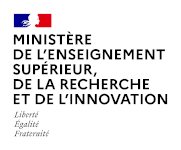Recommendations for Implementing a Virtual Layer for Management of the Complete Life Cycle of Scientific Data
The Data Fabric Interest Group is seeking your comments on their recently posted “Recommendations for Implementing a Virtual Layer for Management of the Complete Life Cycle of Scientific Data, “ which include a summary of current agreed-upon principles, a more detailed analysis of the requirements implied by those principles, and the current state of work on those requirements, as reflected in the work of RDA.
Summary
We are at a tipping point in the development of a common conceptual framework and set of tools and components which will revolutionize the management of scientific data. It is widely acknowledged, as detailed below, that the current volumes and complexity of data now being collected and, even more so, the inevitable and enormous increase in that volume and complexity, have reached the point where action is required. At the same time, and largely in response to this perceived crisis, a number of principles for the management of scientific data have arisen and been widely endorsed. The danger now is that agreement will stop at the level of principles and that multiple non-interoperable domain and technology specific silos will continue to arise, all based on the abstract principles, and we will lose the opportunity of leveraging the current crisis to create a common set of tools and components based on an agreed conceptual approach.
What follows is our summary of the current agreed-upon principles, a more detailed analysis of the requirements implied by those principles, and the current state of work on those requirements, as reflected in the work of RDA, which we believe has the broadest base and most neutral view of the situation. This includes brief summaries of the requirements and the current state of work on repositories, registries, identifiers, metadata, types, licenses, and, in general, the whole ecosystem of interlinked digital objects needed for managing the life cycle of scientific data. We end with a more detailed view of the requirements for selected components extending partly the FAIR principles (Findable-Accessible-Interoperable-Reusable, Appendix A).
…






